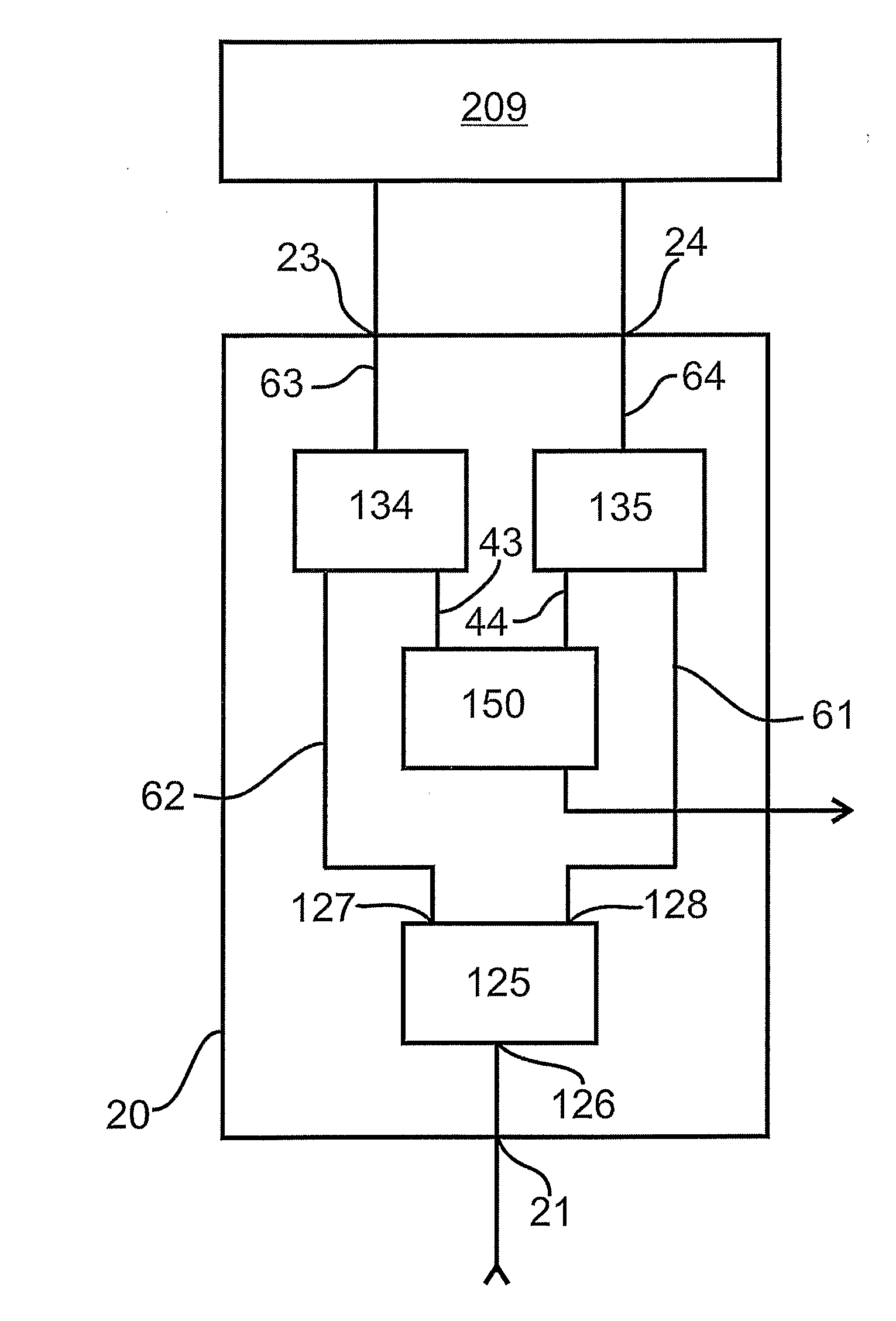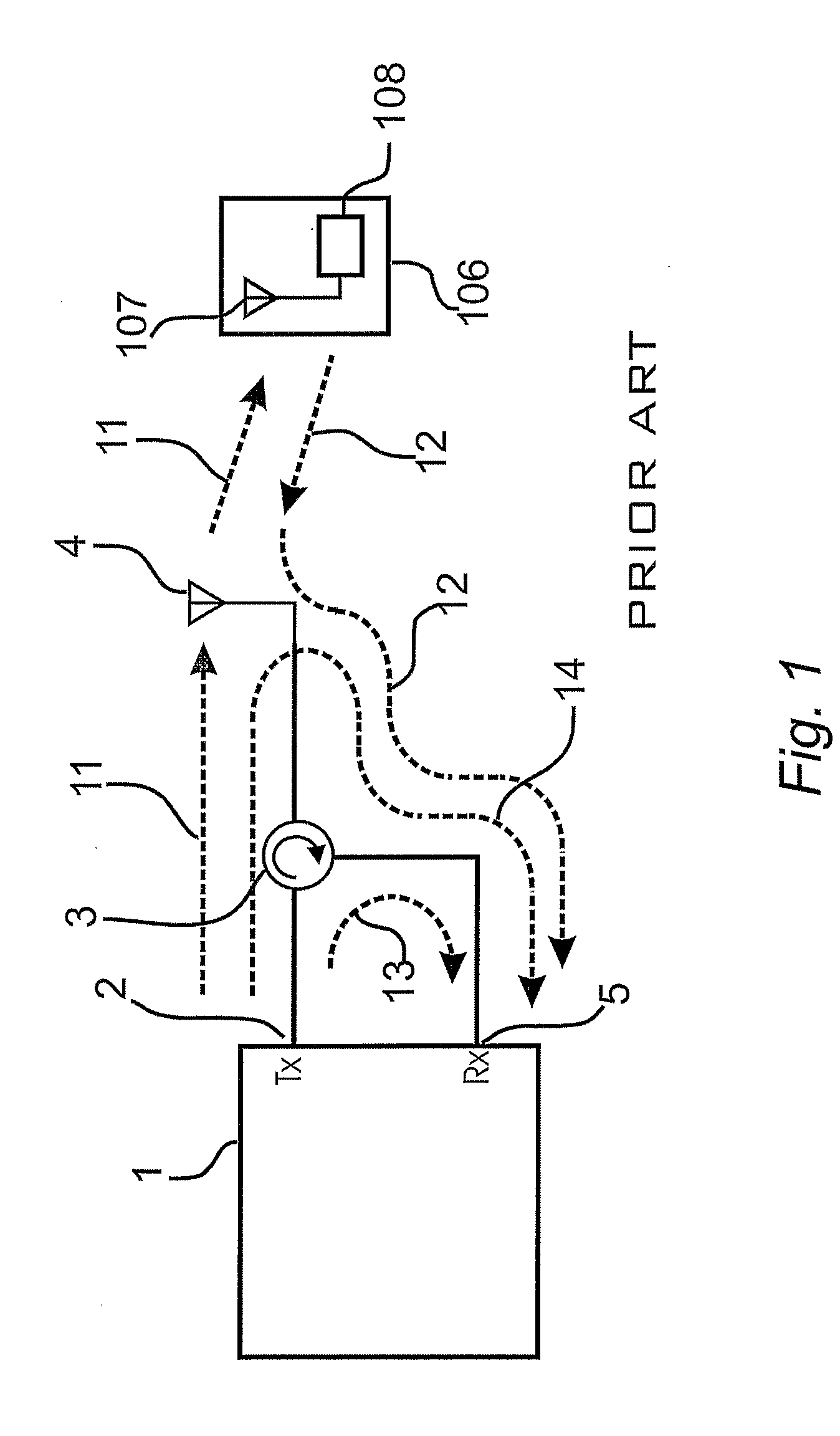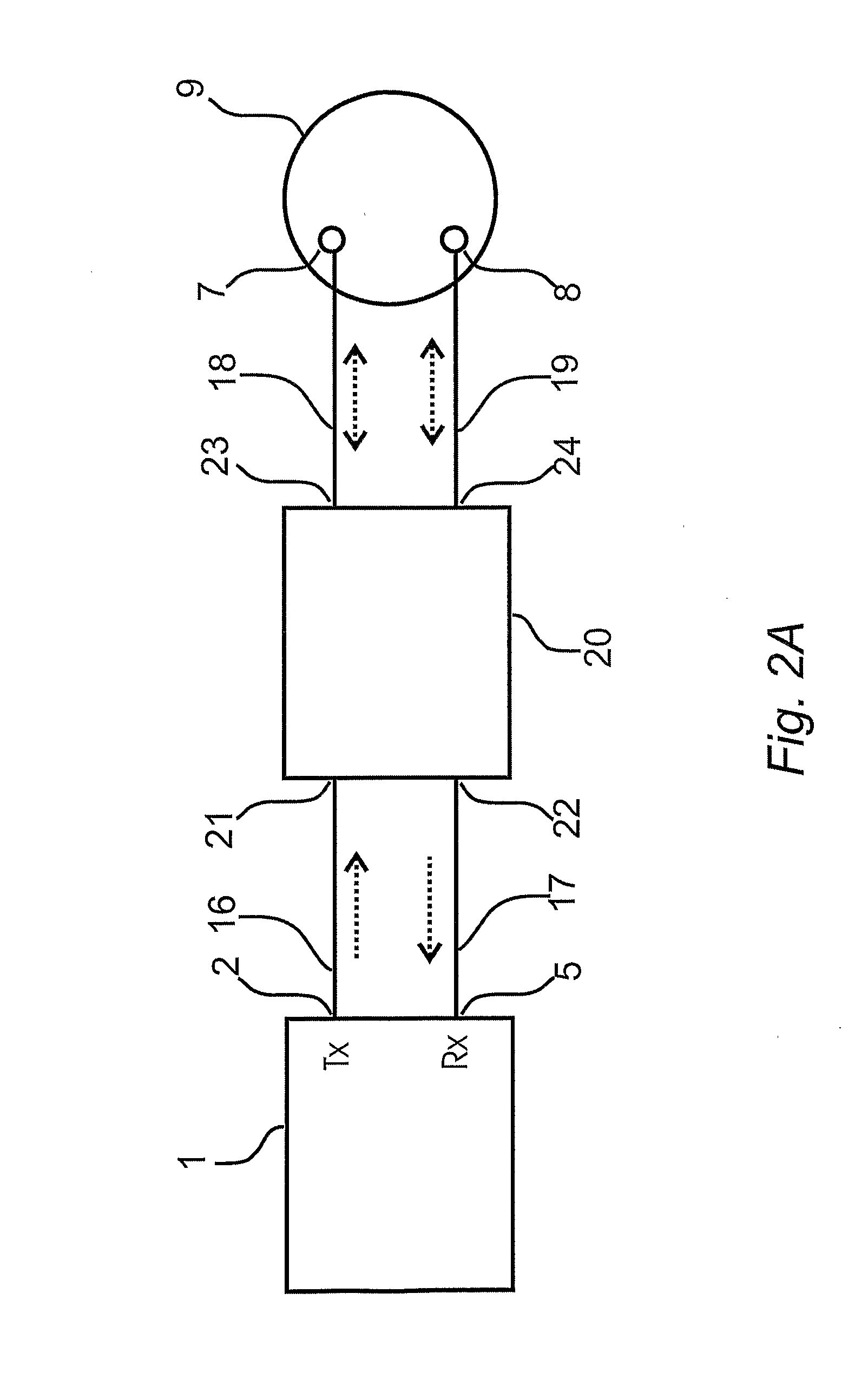Antenna feed network for full duplex communication
a feed network and duplex communication technology, applied in the field of wireless transceivers, can solve the problems of reducing the local receiver's performance affecting the performance of the receiver, etc., and achieve the effects of inadequate filtering, high isolation, and transmission channels
- Summary
- Abstract
- Description
- Claims
- Application Information
AI Technical Summary
Benefits of technology
Problems solved by technology
Method used
Image
Examples
Embodiment Construction
[0057]Referring to FIG. 2A, an antenna feed network 20 is connected between a full duplex transceiver 1 and a CP antenna 9. The full duplex transceiver 1 has a transmitter output 2 and a receiver input 5. The antenna feed network 20 has a transmit channel input 21, a receive channel output 22 and first and second bi-directional network antenna ports 23 and 24 for connection to the CP antenna 9. The CP antenna 9 contains a first antenna feed point 7 and a second antenna feed port 8.
[0058]The example of the present invention shown in FIG. 2A is a preferred embodiment utilizing a CP antenna having two feeds as an antenna assembly; it is however understood that for the purpose of this disclosure an antenna assembly is considered to include two antennas, either disposed independent of one another or in a combined structure, may be substituted for the CP antenna 9, to present two feeds provided that the two antennas function together to have input characteristics wherein input and output ...
PUM
 Login to View More
Login to View More Abstract
Description
Claims
Application Information
 Login to View More
Login to View More - R&D
- Intellectual Property
- Life Sciences
- Materials
- Tech Scout
- Unparalleled Data Quality
- Higher Quality Content
- 60% Fewer Hallucinations
Browse by: Latest US Patents, China's latest patents, Technical Efficacy Thesaurus, Application Domain, Technology Topic, Popular Technical Reports.
© 2025 PatSnap. All rights reserved.Legal|Privacy policy|Modern Slavery Act Transparency Statement|Sitemap|About US| Contact US: help@patsnap.com



